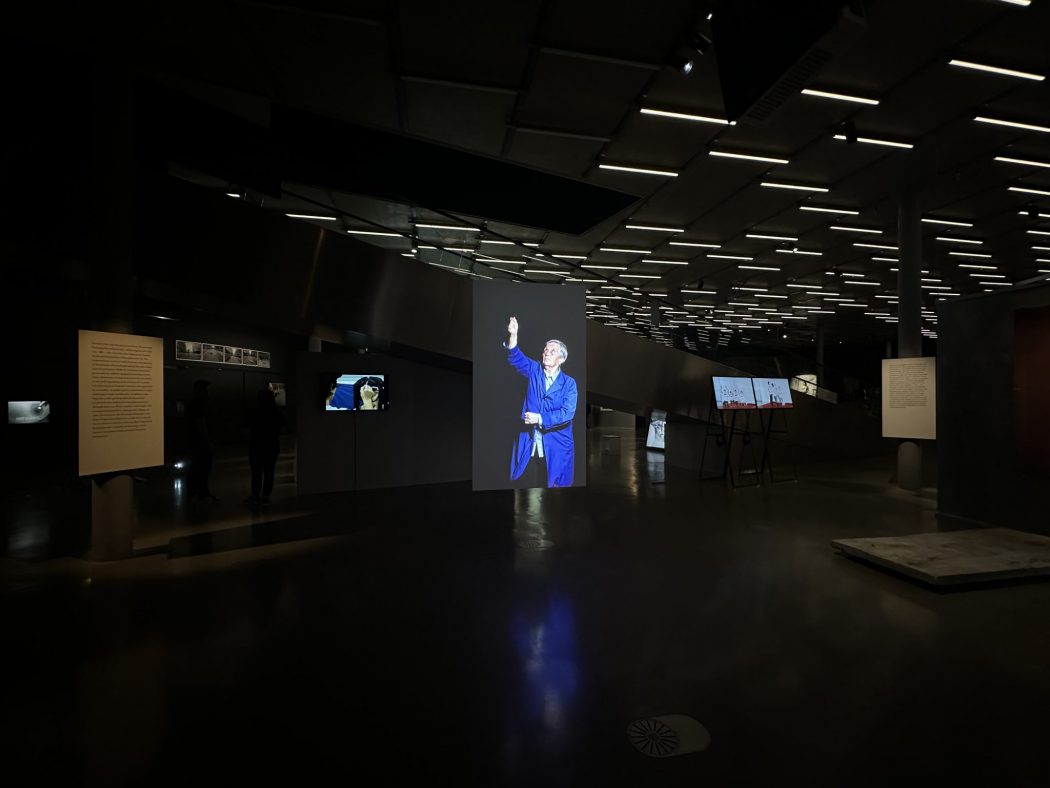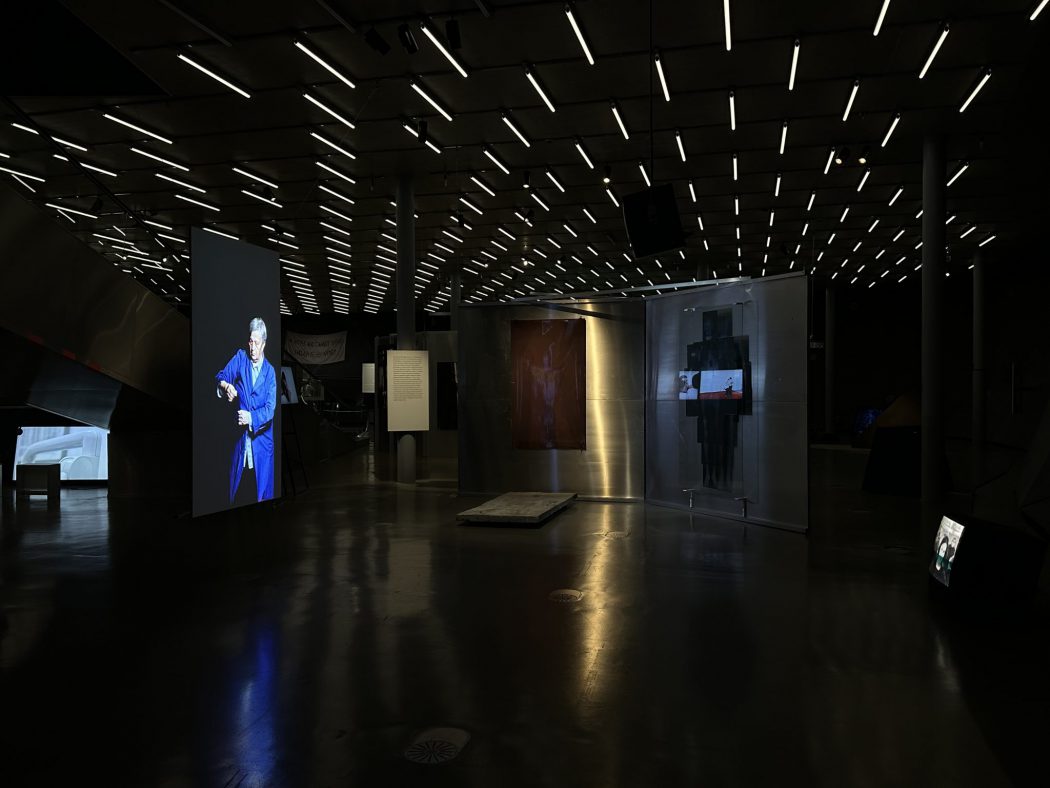With works by Marina Abramović, Josef Bauer, Ana Brus, Günter Brus, CLUB FORTUNA, Lea Culetto, Josef Dabernig, Katrina Daschner, Vlasta Delimar, Ines Doujak & John Barker, Ana Nuša Dragan, Srečo Dragan, VALIE EXPORT, Susanna Flock, Gelitin, Tomislav Gotovac, Igor Grubić, Skupina OHO, Marina Gržinić & Aina Šmid, Nilbar Güreş, Peter Gerwin Hoffmann, IRWIN, Sanja Iveković, Željko Jerman, Anna Jermolaewa, Birgit Jürgenssen, Richard Kriesche, Nina Kurtela, Katalin Ladik, Laibach, Luiza Margan, Marko Marković, Branko Milisković, F. J. Nestler-Rebeau, Friederike Pezold, Neli Ružić, Toni Schmale, Mladen Stilinović, Ingeborg Strobl, Slaven Tolj & Marija Grazio, Milica Tomić, Peter Weibel, Erwin Wurm, Vlasta Žanić among others.
The exhibition Body and Territory focuses on works by artists who – in different ways – explore the relationship between body and identity. The exhibition is based on a curatorial exchange programme between Muzej suvremene umjetnosti (MSU) Zagreb and Kunsthaus Graz. Delayed by the pandemic and postponed several times as a result, Body and Territory: Art and Borders in Today’s Austria opened at MSU Zagreb in early December 2022. The exhibition brings together around 100 works that demonstrate – according to the theory of curators Jasna Jakšić and Radmila Iva Janković – two prevailing tendencies that continue to shape contemporary art in Austria today: radical performance and feminist legacy.
At Kunsthaus Graz, the exhibition is expanded by adding positions from the former area of Yugoslavia and the idea of considering artistic developments in the ‘land in between’ (as the historian and art historian Nena Dimitrijevic described the SFR Yugoslavia) from an outside perspective through the focus of the thematic cornerstones of body and territory. The art scene in Yugoslavia after the Second World War was shaped by the attempt to develop a distinct language, yet at the same time to correspond with art developments in the West. In the specific territory that we now call the former Yugoslavia, art movements emerged in a different social, political and economic environment from that of the West, a development that was determined, for example, by – at best – toleration on the part of politics, as well as the lack of the art market. In the late 1960s and 1970s, when a mood of democratic awakening reigned almost all over the world – also inspiring young people in Yugoslavia to fight for liberal values – tendencies towards the politicisation and socialisation of art were emerging that can certainly be compared to those in Austria, even if they were also under different circumstances.
Ranging from the 1960s to the present, the selection of works highlights changes in how identity is inscribed in our bodies, and how the body is able to overcome the identity projected onto it. The historical works in the show illustrate how the vulnerability of the body, which emerged as a dominant theme in Austrian art at the beginning of the 20th century, became the main medium of radical forms of political resistance in the late 1960s. The regulation of the body, together with its resistance to classifications and categories, is also the theme of a number of more recent works in the exhibition. What role does the body still play in art today? What is its underlying social meaning? What is the appeal of bodily acts of transformation and the border crossings that have always been a characteristic part of identity formation?
Body and Territory is to be understood as a dialogue between neighbours, in which connecting elements of artistic practices around the themes of body and identity are made visible.


